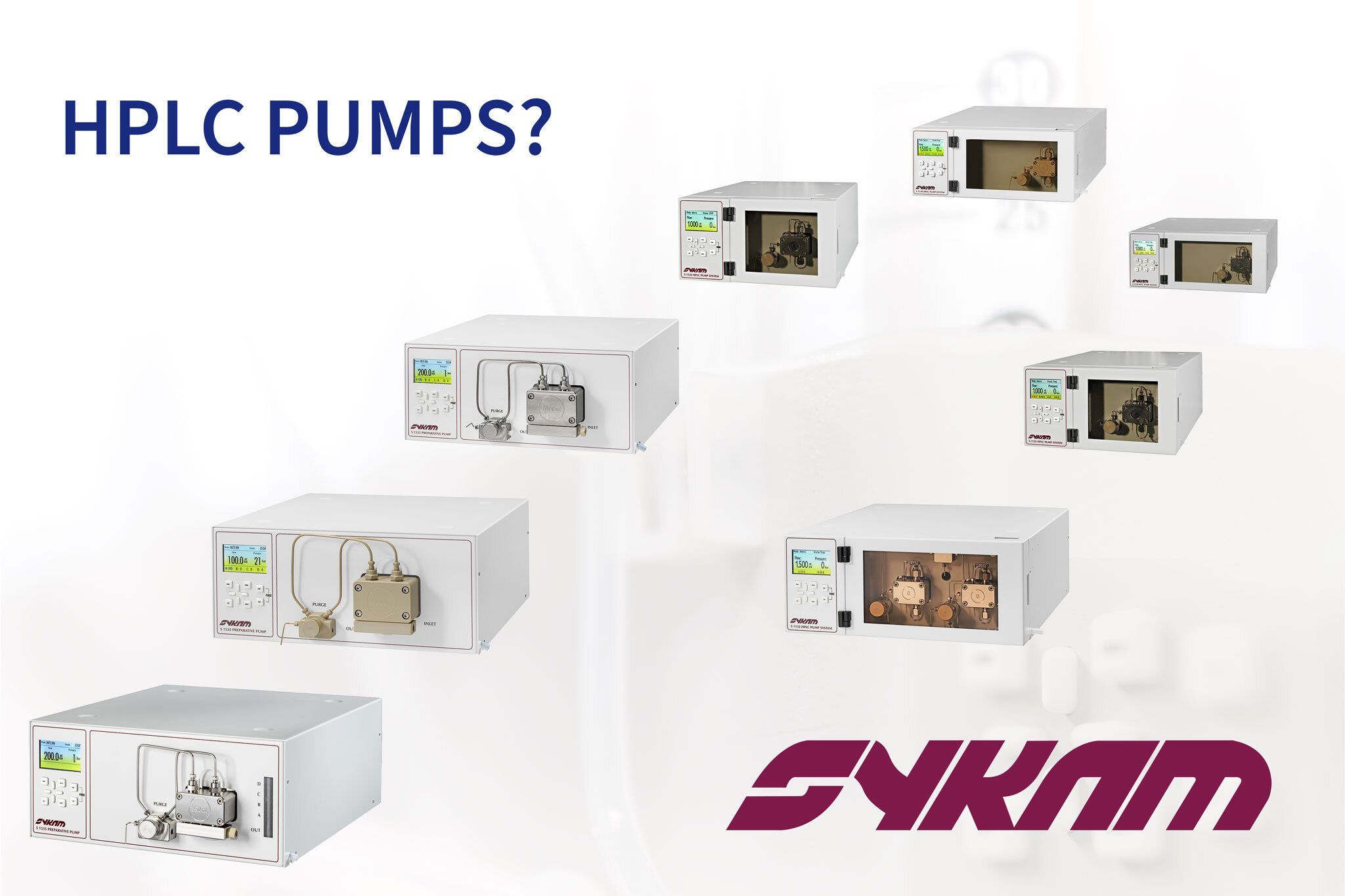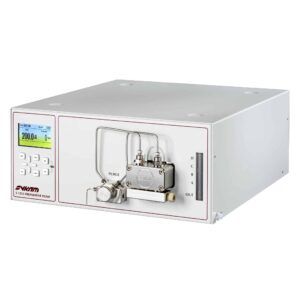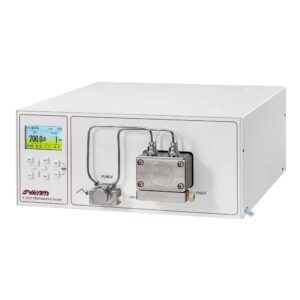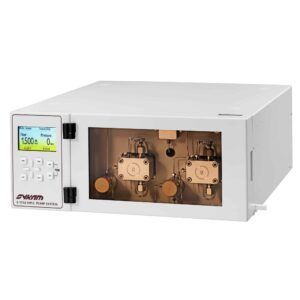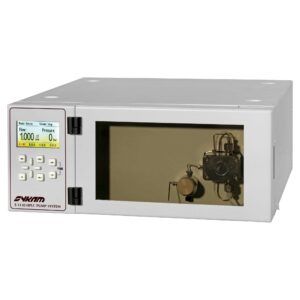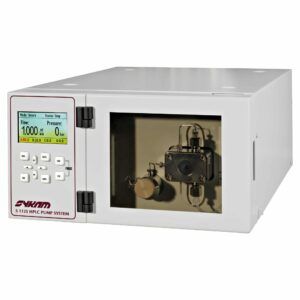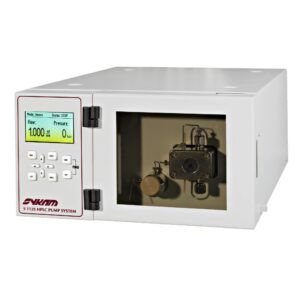Looking for an HPLC pump with a flow rate range of up to 2 ml/min or an HPLC pump of up to 1000 ml/minute? Any flow rate between 1 µl/min and 1000 ml/min? Pressures up to 400 bar? With stainless steel pump heads or with a metal-free flow path for biochromatography or radiochromatography? Sykam has the right HPLC pump!
As a chromatographer you will probably wish for an HPLC pump that gives best performance at the flow rate and pressure that you will need most of the time for your routine applications. But if demands change for other applications, it is worthwhile knowing what the possibilities or limitations of any chosen HPLC pump are.
Needless to say, that good or “the best possible” pump performance is usually judged by the user by looking at the detector baseline quality of any given chromatography system. This of course apart from the basic performance parameters as flow rate accuracy and capability to deal with the necessary pressures at the desired flow rate. Depending on the type of detector, typically any flow/pressure pulsation will manifest itself as wave patterns on the baseline. Any effects from eluent gradient mixing will add on top of that. Without elaborating on the different types of HPLC detectors and their specific sensitivities, the point is that ideally an HPLC pump should have a perfect constant and pulsation-free flow.
The Sykam HPLC pumps are designed as dual-piston reciprocating pumps. And, even if you are not familiar with this concept, it will not be hard to imagine that a pump with a 1000 ml/min flow rate range will not give best analytical performance at 1.5 ml/min with for instance an electrochemical or refractive index detector. As stupid as this may sound, it does pose the question of where the performance boundaries of a chosen HPLC pump are!
Even with the well-established concept of dual-piston pumps, there are lots of design challenges and choices for a supplier to consider. To stay with the example of the 1000 ml/min HPLC pump running at 1.5 ml/min, just the size of the used pistons, check valves and piston stroke volume tells us that 1.5 ml/min is far from optimal for a 1000 ml/min pump. And – YES – the pump will run at this flow rate and pumps relatively accurate when just looking at the volumetric displacement, but the detector baseline will tell you a different story. The point being here is that there is no way around the fact that we need a range of pumps optimized for each given flow rate range along with necessary adaptations for specific fields of application like biochromatography or radiochromatography.
With HPLC pumps covering 8 different flow rate ranges, each available with stainless steel or PEEK pump heads and optional low-pressure gradient mixing, Sykam offers probably the most versatile and comprehensive range of HPLC pumps available on the market. Just check the summary table here below.
| Flow rate range (ml/min) | Pump | Pump heads and flow path | Optional gradient formation | High pressure gradient |
|---|---|---|---|---|
| 2 | S 1125* | Stainless steel or PEEK | Internal | Up to 4 pumps |
| 4 | S 1130 | Stainless steel or PEEK | Internal | Up to 4 pumps |
| 4 | S 1132 | Stainless steel or PEEK | – | Dual integrated pump |
| 10 | S 1125*, S 1130 | Stainless steel or PEEK | Internal | Up to 4 pumps |
| 10 | S 1132 | Stainless steel or PEEK | – | Dual integrated pump |
| 40 | S 1130 | Stainless steel or PEEK | Internal | Up to 4 pumps |
| 40 | S 1132 | Stainless steel or PEEK | – | Dual integrated pump |
| 150 | S 1535 | Stainless steel or PEEK | Internal | Up to 4 pumps |
| 150 | S 1525 | Stainless steel or PEEK | External module | Up to 4 pumps |
| 250 | S 1535 | Stainless steel or PEEK | Internal | Up to 4 pumps |
| 250 | S 1525 | Stainless steel or PEEK | External module | Up to 4 pumps |
| 500 | S 1525 | Stainless steel or PEEK | External module | Up to 4 pumps |
| 1000 | S 1525 | Stainless steel or PEEK | External module | Up to 4 pumps |
